Related Research Articles

The International Union of Pure and Applied Physics is an international non-governmental organization whose mission is to assist in the worldwide development of physics, to foster international cooperation in physics, and to help in the application of physics toward solving problems of concern to humanity. It was established in 1922 and the first General Assembly was held in 1923 in Paris. The Union is domiciled in Geneva, Switzerland.
The International Commission for Optics (ICO) was created in 1947 with the objective to contribute, on an international basis, to the progress and dissemination of the science of optics and photonics and their applications. It emphasises the unity of the crossdisciplinary field of optics.
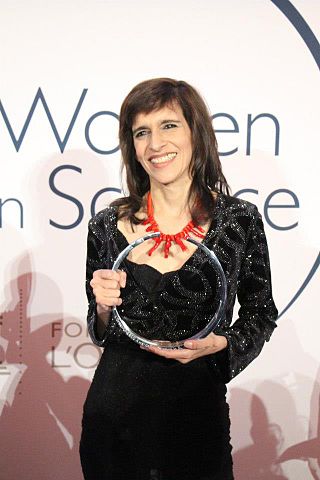
Márcia Cristina Bernardes Barbosa is a Brazilian physicist known for her research on the properties of water, and for her efforts for improving the conditions for women in academia. She is a professor at UFRGS, and a director of the Brazilian Academy of Sciences. She is the rector of UFRGS.
The purpose of the International Commission for Acoustics (ICA) is to promote international development and collaboration in all fields of acoustics including research, development, education, and standardisation.
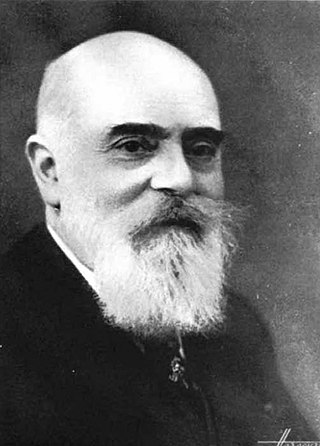
Henri Abraham (1868–1943) was a French physicist who made important contributions to the science of radio waves. He performed some of the first measurements of the propagation velocity of radio waves, helped develop France's first triode vacuum tube, and with Eugene Bloch invented the astable multivibrator. He was murdered at Auschwitz during the Holocaust.
The IUPAC/IUPAP Joint Working Party is a group convened periodically by the International Union of Pure and Applied Chemistry (IUPAC) and the International Union of Pure and Applied Physics (IUPAP) to consider claims for discovery and naming of new chemical elements. It is sometimes called the Joint Working Party on Discovery of Elements. The working party's recommendations are voted on by the General Assembly of the IUPAP.
Kennedy J. Reed was an American theoretical atomic physicist in the Theory Group in the Physics & Advanced Technologies Directorate at Lawrence Livermore National Laboratory (LLNL) and a founder of the National Physical Science Consortium (NPSC), a group of about 30 universities that provides physics fellowships for women and minorities.

Laura H. Greene is the Marie Krafft Professor of Physics at Florida State University and chief scientist at the National High Magnetic Field Laboratory. She was previously a professor of physics at the University of Illinois at Urbana-Champaign. In September 2021, she was appointed to the President's Council of Advisors on Science and Technology (PCAST).
Professor Aba A. Bentil Andam is a Ghanaian particle physicist who was President of the Ghana Academy of Arts and Sciences from 2017 to 2019. She is the first Ghanaian female physicist.
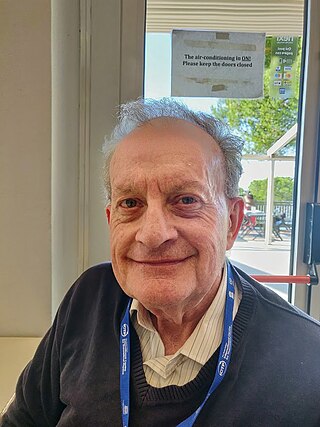
Professor Bruce Harold John McKellar is an Australian theoretical particle physicist who is Honorary Professorial Fellow at the Centre of Excellence for Particle Physics at the Terascale (CoEPP) in the School of Physics at The University of Melbourne. The International Union of Pure and Applied Physics (IUPAP) elected him as its President-Designate in 2012. In November 2014 McKellar became President of IUPAP, the first-ever Australian to take on this role.
Belita Koiller is a Brazilian Professor of Physics at the Instituto de Física, Universidade Federal do Rio de Janeiro (UFRJ), Brazil. She is a Condensed Matter Theorist, and has contributed to the understanding of the properties of disordered solids, particularly disordered chains and semiconductor alloys. More recently, she has been interested in quantum control of individual electron spin and charge in semiconductors, aiming at applications in quantum information and quantum computing.
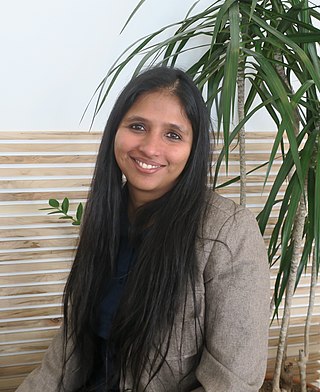
Shohini Ghose is a quantum physicist and Professor of Physics and Computer Science at Wilfrid Laurier University. She has served as the president of the Canadian Association of Physicists (2019-2020), co-editor-in-chief of the Canadian Journal of Physics, and the Director of the Laurier Centre for Women in Science. She was named a 2014 TED Fellow and a 2018 TED Senior Fellow. In 2019 she appeared on the Star TV show TED Talks India Nayi Baat hosted by Shah Rukh Khan. In 2017 she was elected to the Royal Society of Canada's College of New Scholars, Artists and Scientists. Her book Clues to the Cosmos was released in India in December 2019. In 2020, she was selected as an NSERC Chair for Women in Science and Engineering.
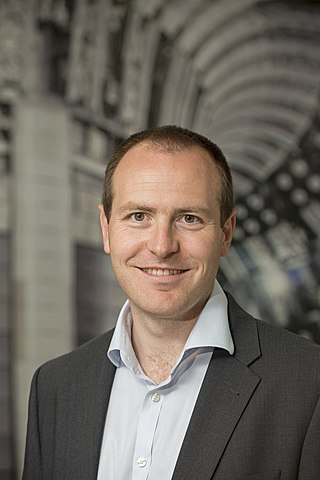
Sir Ian Trevelyan ChapmanFRS is a British physicist who is the chief executive of the United Kingdom Atomic Energy Authority (UKAEA).
Noa Marom is an Israeli materials scientist and computational physicist at Carnegie Mellon University. She was awarded the International Union of Pure and Applied Physics Young Scientist Prize.

Irvy (Igle) Gledhill is a South African physicist at the University of Witwatersrand, School of Mechanical, Industrial & Aeronautical Engineering, in Johannesburg.
Sumathi Rao is an Indian theoretical physicist and professor at the International Centre for Theoretical Sciences, Bengaluru, working in the field of condensed matter physics. She is a former member of women in physics promotion of International Union of Pure and Applied Physics (IUPAP) from 2000 to 2008.
Giulia Grancini is an Italian physicist who is a Professor of Chemistry at the University of Pavia. Her work considers new materials for photovoltaic devices, including perovskites and polymer-based materials. In 2020, Grancini was named the Royal Society of Chemistry Journal of Materials Chemistry Lecturer.

Rachel Mamlok-Naaman is an academic based in Israel. She specializes in chemistry education.
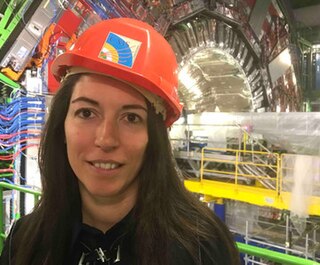
Florencia Canelli is since 2021 the appointed Swiss scientific delegate to the CERN council, the supreme decision-making authority of the CERN Organization. From 2021-2024, she was appointed chair of the IUPAP division of particles and field (C11). From 2021-2023, she was co-coordinator of the physics program of the CMS collaboration, a CERN experiment with over 3000 physicists. In 2010, Canelli was awarded the IUPAP Young scientist prize, an international prize awarded to one experimental and one theoretical physicist per year, for "her pioneering contribution to the identification and precision measurements of rare phenomenon through the use of advanced analysis techniques to separate very small signals from large background processes at the Tevatron collider." She has been an author on four multi-purpose collider experiments, namely the CMS experiment and ATLAS experiment at the CERN LHC, and the CDF experiment and D0 experiment at the Fermilab Tevatron. She is currently a full professor at the University of Zurich, Physics Institute, specializing in particle physics.

Silvina Martha Ponce Dawson is an Argentine physicist specialized in biophysics and a full professor at the Faculty of Exact and Natural Sciences of the University of Buenos Aires (UBA), and senior researcher at the National Scientific Research Council (CONICET). In October 2024 she was elected to preside the International Union of Pure and Applied Physics (IUPAP) for the period 2025 to 2027. Her main research interests are biological and statistical physics. She is the author of more than 100 articles that have appeared in scientific journals and conference proceedings.
References
- ↑ "Women in Physics". Chemistry International. 25 (2). International Union of Pure and Applied Chemistry. March–April 2003.
- ↑ "Global Survey of Physicists". 2013-09-19. Retrieved 2018-03-17.
- ↑ "Is There a Land of Equality for Physicists?". 2015-09-08. Retrieved 2018-03-17.
- ↑ "Gender Gap in Science". Gender Gap in Science. Retrieved 2018-03-17.
- ↑ "ICSU". International Council for Science — ICSU. Retrieved 2018-03-17.